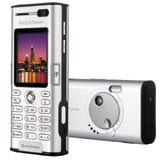Phone designers try to connect with consumers

It is hard to spot trends when everyone is trying different things at once. The new handsets unveiled at the 3GSM conference in Cannes last week demonstrate that phone designers have little idea what the future holds for mobile communications, but they are having fun guessing.
Swivelling screens, multiple cameras, music players and ultra-thin forms variously defined the key product launches, many of which will not reach the UK market until the tail end of this year.
Of the major handset manufacturers, Motorola is progressing with the most self-conscious design focus. Its Pebl V6, V3 Razr and Slvr V8 phones refine what vice-president of consumer experience design Jim Wicks describes as Motorola’s two ‘key silhouettes’ – a chiselled, thin rectangle and a ‘tactile, soft and mysterious’ clamshell.
The show also saw the debut of Motorola’s E1060, which is widely reported to be the first phone to come out of the manufacturer’s tie-up with Apple Computer. In fact, though the E1060 was fitted with a demonstration version of the mobile Java iTunes software, the iTunes phone itself is under wraps until later in the year.
As the mobile handset industry contemplates the impact of the iPod on the way the world uses portable devices, Motorola seems to be the only manufacturer to be taking note of changing trends. Nokia’s 6680 – which also comes with cameras mounted at the front and rear of the phone – is a 3G phone that supports the mobile music application announced by Nokia and Loudeye at the conference.
The bulkiness of 3G phones has so far contributed to their relatively slow uptake, but 3GSM pointed the way forward to a new standard, in which designers are far less encumbered by technology.
Sony Ericsson has already announced its intention to brand a music-enabled phone with the Walkman name later this year. In the meantime, the clamshell K600 comes with the ability to import full-track downloads and play 3D games in a handset that is no larger or heavier than a standard 2G model. ‘The age of bulky 3G handsets is over,’ announced Hiroshi Nakaizumi, head of design at Sony Ericsson.
Elsewhere were mobile gaming phones such as the LG SV360, on which gameplay is controlled not by buttons but by the movement of the handset. That phone is currently only available in South Korea, and in Western markets the trend is for multi-use handsets that do not depart greatly from the basic phone template.
But that is not to say that the standard phone template does not still offer new design possibilites. The Helix (DW 17 February), with its swivelling face, was produced purely as a showcase for design consultancy PDD’s abilities. At the very least, it ought to strike a chord with Samsung, which enhanced its reputation for the far-out at 3GSM with its own swivelling model – the SGH-Z130, whose screen rotates through 90Ëš to show video images in widescreen.
-
Post a comment



